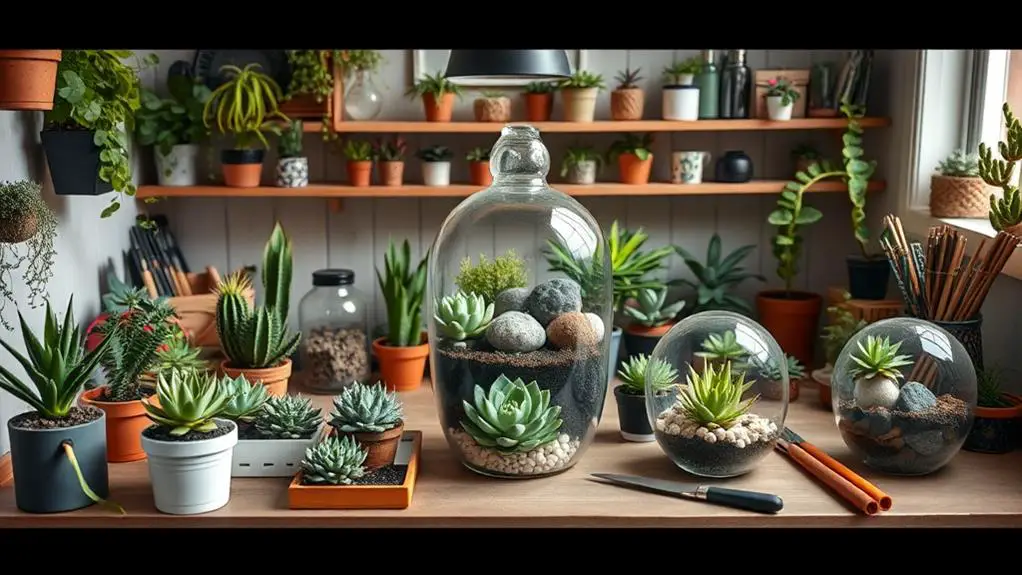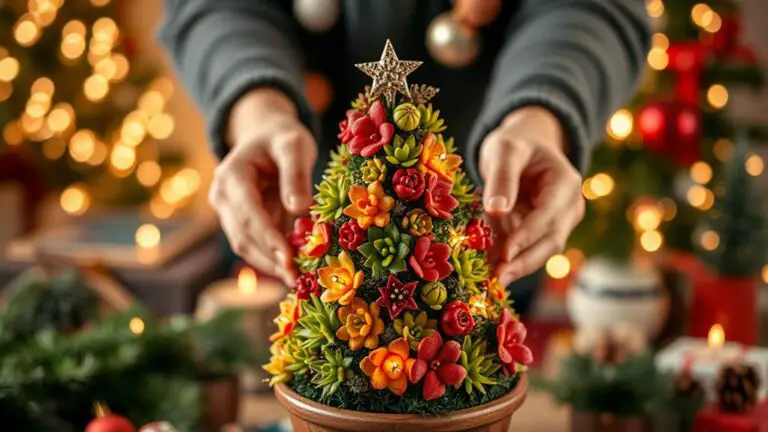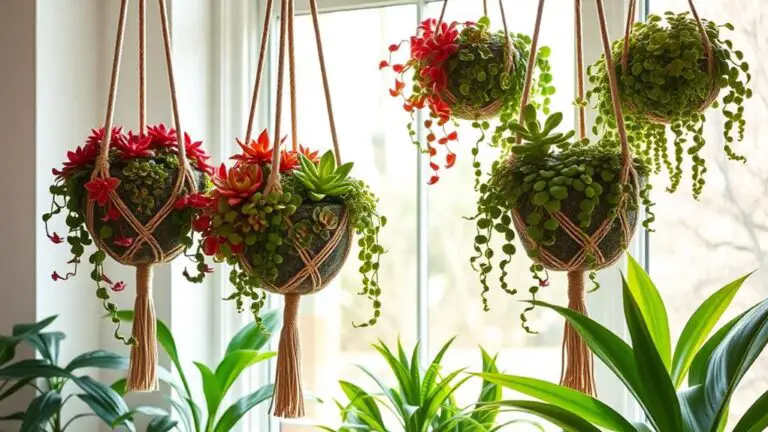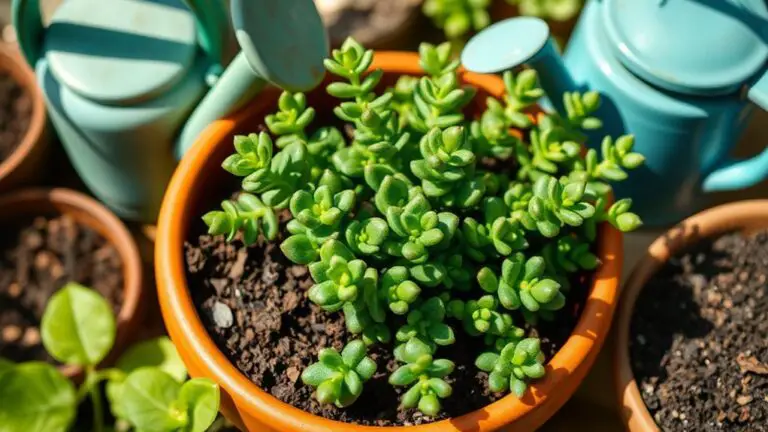Succulent Terrarium Tutorial Plus Helpful Tips
Creating a succulent terrarium isn't just a project; it's an opportunity to blend creativity with a touch of nature in your living space. You'll need to start by choosing the right container, ensuring it allows for proper airflow and visibility. But selecting the perfect glass vessel is just the beginning. You'll also have to gather essential materials like pebbles, activated charcoal, sphagnum moss, and a well-draining soil mixture. So, how exactly do you layer these components, and what are the secrets to maintaining the balance of moisture and air? Let's explore each step in detail.
Choosing the Right Container
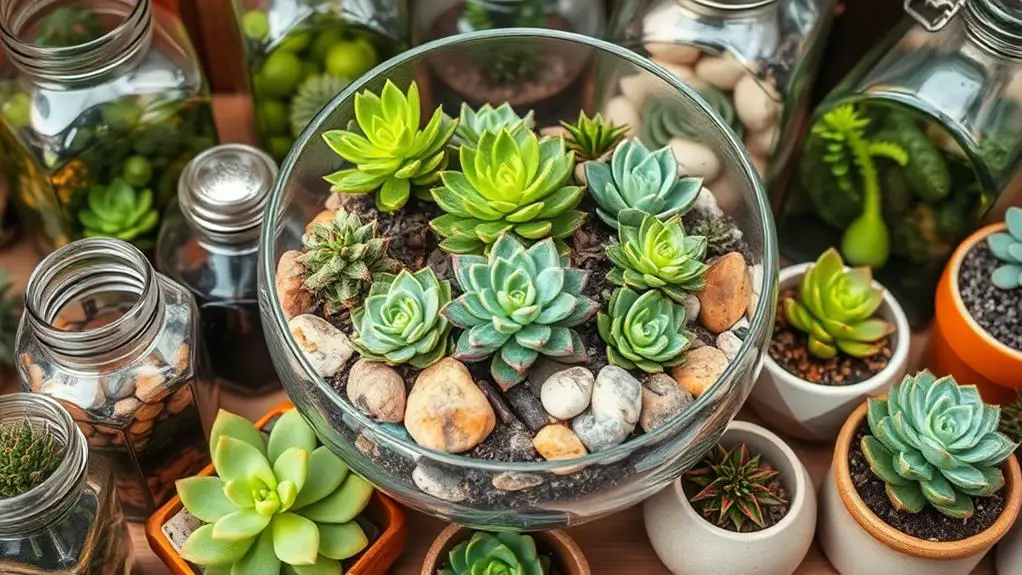
When choosing the right container for your succulent terrarium, remember that shallow glass containers are your best bet.
These containers promote better airflow and reduce the risk of mold growth compared to deeper ones, which can trap moisture. Clear glass vessels also enhance the visibility of your terrarium layers and plants. This makes it easier to monitor moisture levels and the overall health of your succulents.
Using containers with multiple drainage holes is essential.
These holes provide improved airflow and prevent water retention, ensuring your succulents stay healthy. Without proper drainage, water can accumulate at the bottom, leading to root rot and other issues.
Consider repurposing secondhand items like mason jars or teacups.
Not only is this a cost-effective option, but it also adds a unique and creative touch to your succulent terrarium. Repurposing items can make your project both economical and environmentally friendly.
Essential Materials
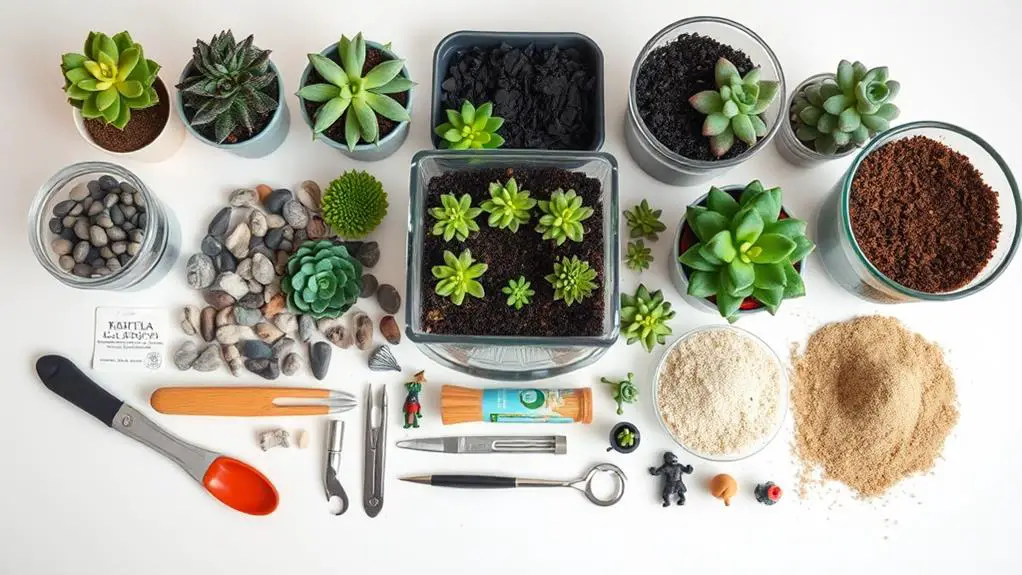
Creating a stunning succulent terrarium starts with gathering the essential materials. First, choose a glass container for visibility and airflow. A glass trifle container works perfectly because it shows off the plant layers beautifully.
Begin by adding a half-inch layer of pebbles at the bottom. This helps with drainage, preventing water from pooling and causing root rot.
Next, sprinkle a thin layer of activated charcoal over the pebbles. Activated charcoal is important because it reduces odors and keeps the soil fresh.
After that, add a layer of sphagnum moss. The moss controls moisture and acts as a barrier, keeping the soil from mixing with the pebbles.
Now, it's time to focus on the soil. Succulents need a well-draining mixture to thrive. Use a specialized cactus and succulent soil, or mix equal parts Turface, pine bark shreds, and crushed rock.
This mixture guarantees proper drainage and aeration, which are essential for healthy succulents.
Step-by-Step Tutorial
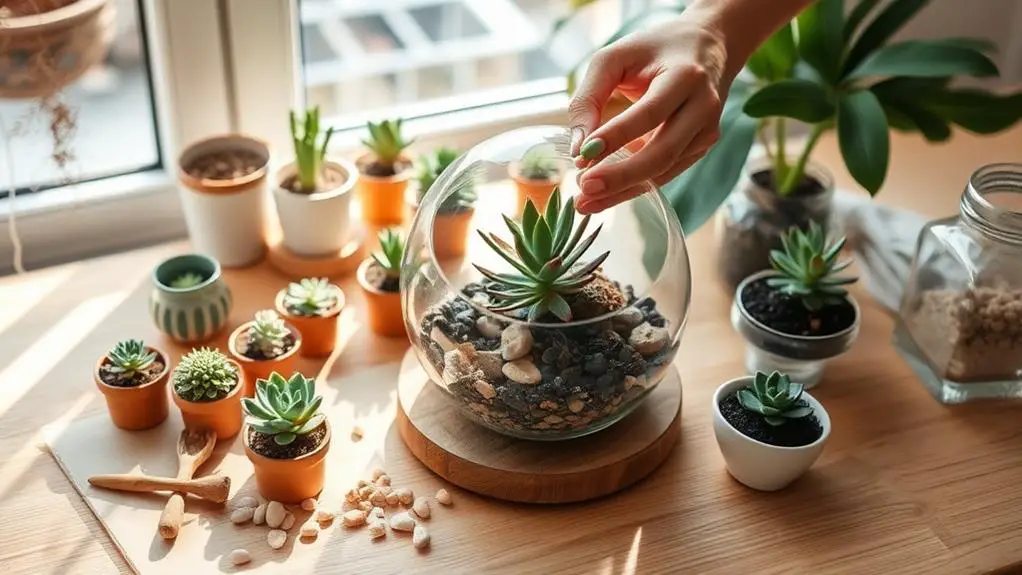
Setting up your succulent terrarium is a straightforward and rewarding process. First, prepare your workspace with newspaper or plastic to catch any debris. This makes cleanup easy.
Next, take your glass container and layer the bottom with one to two inches of pebbles. This is essential because succulents need good drainage.
After the pebbles, add a layer of activated charcoal or perlite. This helps reduce odors.
Then, place a layer of sphagnum moss on top of the charcoal. The moss will separate the charcoal from the soil, which helps maintain the soil quality.
Now, add one inch of soil for growing succulents. Carefully remove your succulents from their pots, gently crumbling the excess soil from the roots.
Position the succulents inside the terrarium on the prepared soil. Add more soil as needed to cover the roots completely.
Watering and Maintenance
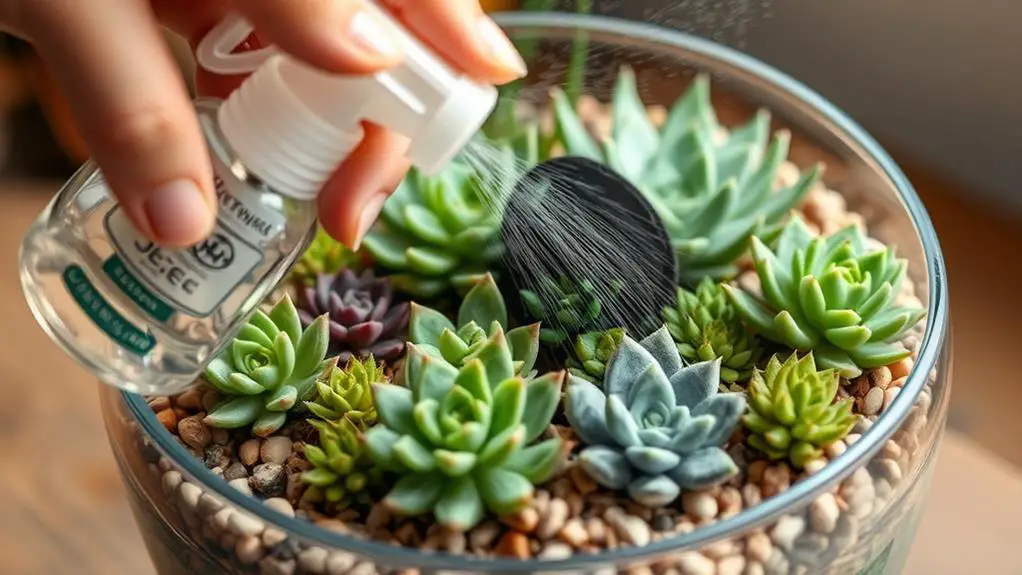
Maintaining your succulent terrarium requires careful attention to watering and overall plant health. Start by using a spray bottle to moisten the soil lightly. Be cautious not to overwater, as this can create waterlogged conditions that harm your succulents.
The glass terrarium acts like a mini greenhouse, slowing evaporation, so you'll need to monitor moisture levels closely to avoid excess humidity.
Always allow the soil to dry out completely between watering sessions. Succulents thrive in dry environments that mimic their natural habitats. An open space within the terrarium helps reduce the risk of mushiness and cloudiness, promoting healthier plant growth and longevity.
Regular maintenance is essential. Check for signs of mold or rot and adjust your watering schedule based on your plants' health. If you notice any issues, don't hesitate to take action immediately.
Keeping a consistent maintenance routine guarantees your succulents stay healthy and vibrant.
Creative Planter Options
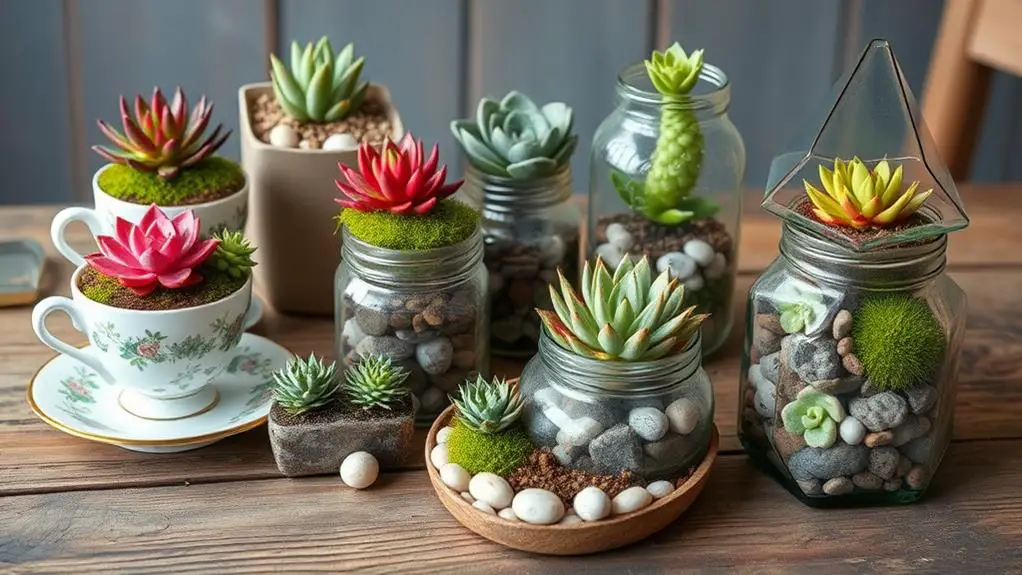
When it comes to showcasing your succulents, you don't have to stick with traditional pots. You can get creative with containers to make your succulent display truly unique. For example, Snappy Pots offers a magnetic planter that attaches securely to surfaces like fridges. This space-saving solution is perfect for succulent lovers with limited space.
Each magnetic planter has a built-in liner to prevent water from pooling and dripping, keeping your gardening experience clean and manageable.
Another fun idea is to use mason jars, teacups, or even repurposed thrift store items. These creative containers can add a touch of personality to your succulent arrangements while promoting sustainability.
When choosing these containers, make sure they've proper drainage or consider adding a layer of pebbles at the bottom to help with water flow.
Local garden shops may also have unique planter options that you mightn't find elsewhere. Remember, the goal is to create a display that reflects your style and fits well in your space.
With over 5 million views and 60,000 shares on Instagram, the popularity of unique planters like Snappy Pots shows that people love innovative ways to showcase their succulents.
Frequently Asked Questions
How to Put Together a Succulent Terrarium?
Start with a clear, shallow glass container with drainage holes. Add layers: pebbles, activated charcoal, sphagnum moss, and succulent soil. Carefully plant your succulents, spacing them well. Lightly water with a spray bottle, ensuring soil isn't soaked.
How Often Should I Water Succulents in a Terrarium?
You should water succulents in a terrarium every 1-3 weeks. Let the soil dry completely between waterings. Use a spray bottle to lightly moisten the soil, avoiding leaves. Closed terrariums need less frequent watering due to higher humidity.
Do Succulents Do Well in a Terrarium?
Yes, succulents can thrive in a terrarium, but you need to guarantee it's open for airflow. Use a well-draining soil mixture and shallow container. Monitor moisture levels carefully and water with a spray bottle to avoid over-watering.
Do You Need Activated Charcoal for Succulent Terrarium?
You don't strictly need activated charcoal for a succulent terrarium, but it helps. It absorbs odors and toxins, prevents mold, and promotes healthier soil. A thin layer enhances aesthetics and reduces overwatering risks, benefiting your succulents.
Conclusion
You've got all the steps and tips to create your very own succulent terrarium. Remember, choosing the right container and materials is key. Follow the step-by-step guide, and don't forget to monitor the moisture levels. With a little care and creativity, your terrarium will flourish beautifully. Keep experimenting and enjoy the process. You can do this, and soon you'll have a stunning piece of living art to brighten up any space. Happy gardening!

